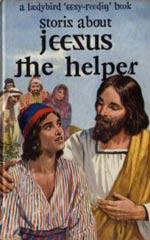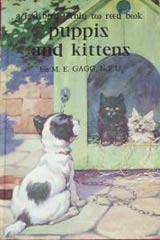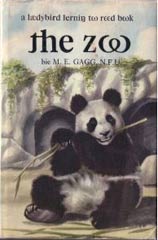The
Initial Teaching Alphabet (I.T.A.) was developed by Sir James
Pitman (the grandson of Sir Isaac Pitman, the inventor of a
system of shorthand) in the early 1960s.
It was not intended to be a strictly phonetic transcription
of English sounds, or a spelling reform for English as such,
but instead a practical simplified writing system which could
be used to teach English-speaking children to read more easily
than can be done with traditional orthography.
After children had learned to read using ITA, they would then
eventually take the transition to standard English spelling.
Although it achieved a certain degree of popularity in the 1960s,
it fell into disuse by the early 1970s. |
 |
Ladybird
ITA books
In the mid-to-late 1960s Ladybird decided
to print some of their previously published books using the
Initial Teaching Alphabet. Some of the titles printed using
ITA were The Fisherman (606b), The Zoo (563), The Farm (563),
The Party (563), Jesus the Helper (606a), as well as many more.
In the early 1970s Ladybird dropped the scheme as it proved
to be unpopular within the primary education system. There has
even been suggestion that children taught using the ITA system
have later been found to have learning difficulties.
Collecting
Value
Ladybird ITA books are
not very common as the scheme was only printed by Ladybird over
a 5-year period, and even then it is believed that the print
runs were small and perhaps seldomly reprinted, if at all. This
certainly makes them harder to find than your standard Ladybird
books but they are known to surface in charity shops and car-boot
sales around the UK from time to time.
As far as value is concerned, expect to pay £10 - £20
for a Ladybird ITA title in good condition. Perhaps a little
more for titles that don't surface too often. |
 |
More
about the ITA
The ITA originally had 43 symbols, which was expanded to 44,
then to 45.
Each symbol predominantly represented a single English sound
(including affricates and diphthongs), but there were complications
due to the desire to avoid making I.T.A. needlessly different
from standard English spelling (which would make the transition
from I.T.A. to standard spelling more difficult), and in order
to neutrally represent several English pronunciations or dialects.
|
In
particular, there was no separate ITA symbol for the English
schwa sound , and schwa was written with the same letters used
to write full vowel sounds.
Consonants written by double letters or "ck", "tch"
etc. sequences in standard spelling were written with multiple
symbols in ITA.
A
special typeface was created for the ITA, whose characters were
all lower case. Where capital letters are used in standard spelling,
the ITA simply used larger versions of the same lower-case characters.
The following chart gives the form and pronunciation of the
symbols of the 44-character version of the ITA.:
|
 |
| List of
known Ladybird ITA Books |
The Ladybird
Book of Pets (series 536)
T he Zoo (series 563)
Puppies and Kitten (series 563)
The Party (series 563)
The Fisherman (series 606b)
The Farmer (series 606b)
updating . . . . |
|
| Random
fact |
|
The first books under the imprint 'The Ladybird series' were 'Tiny Tots Travels' and 'Stories from Hans Andersen' (1914) and 'Little Stories for Little People' and 'ABC Picture Book' (1916). |
|
